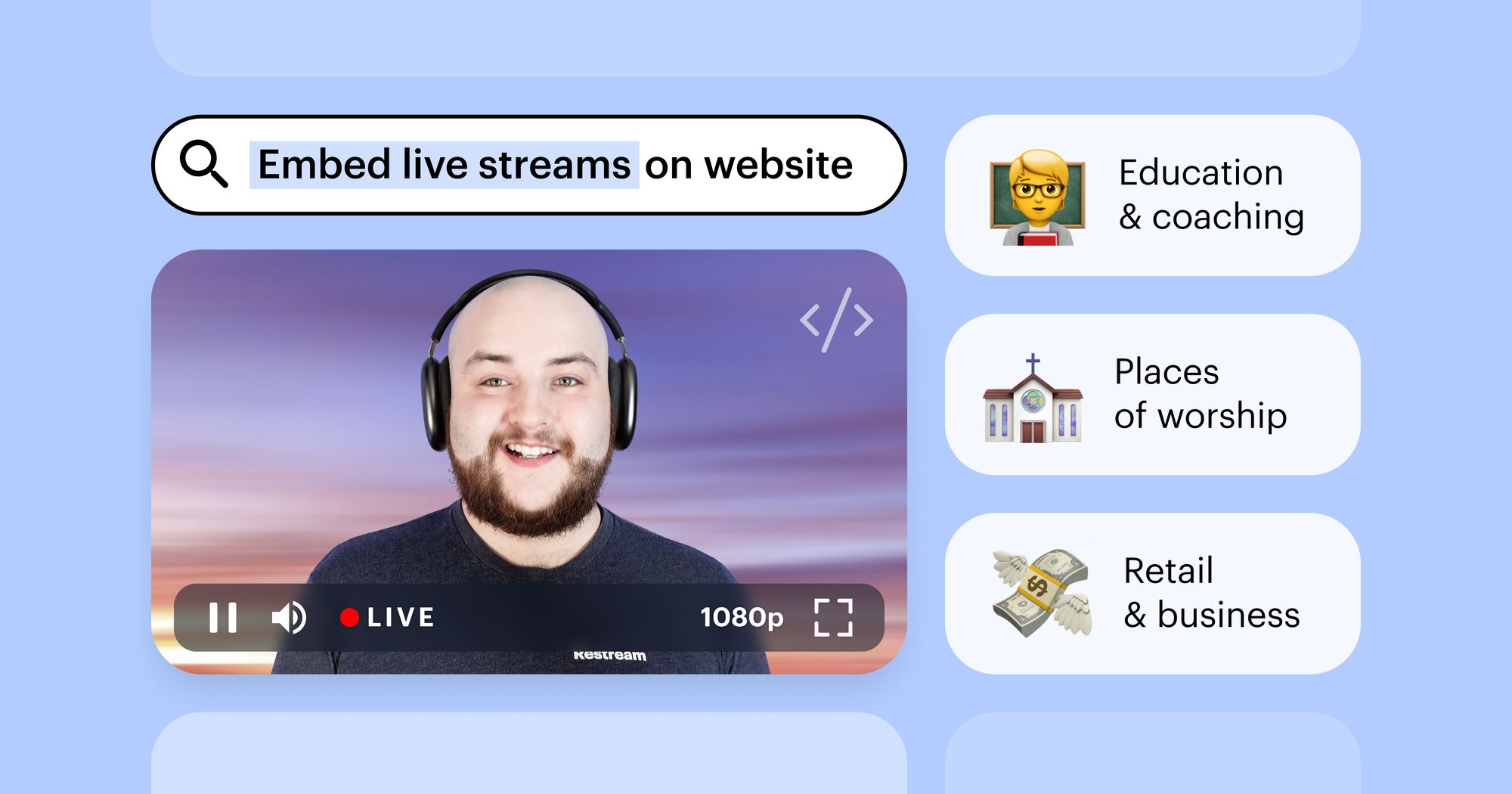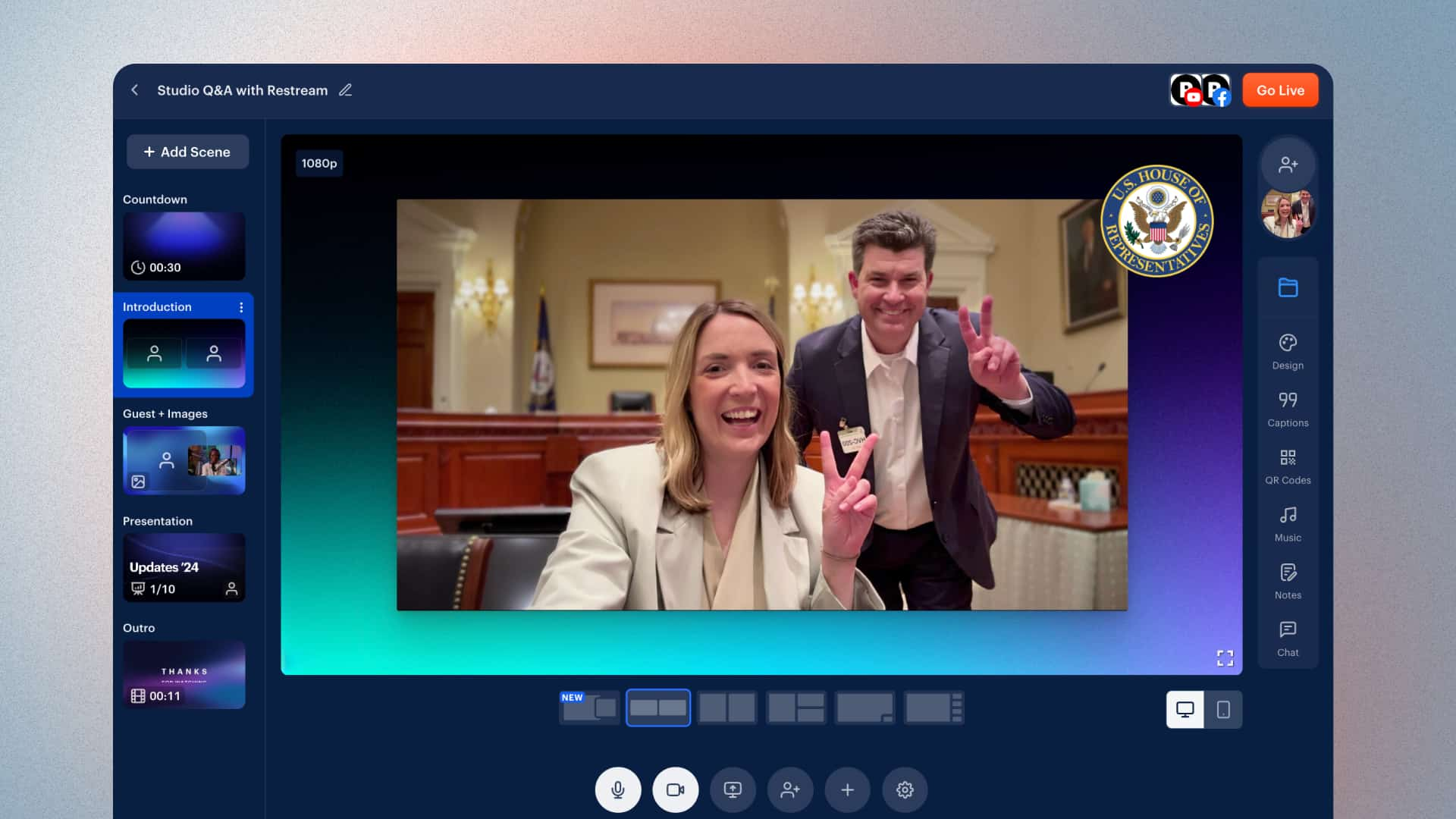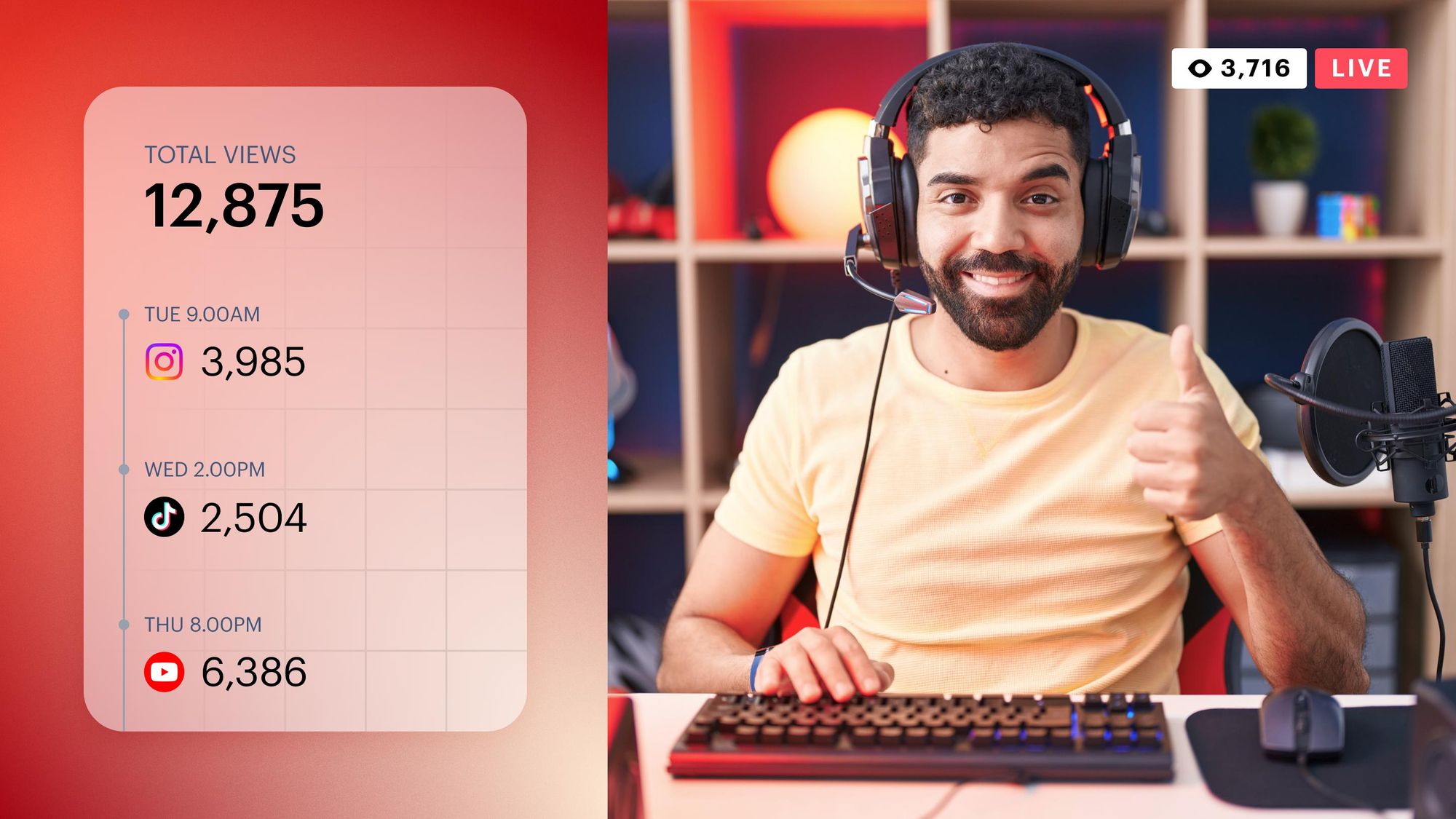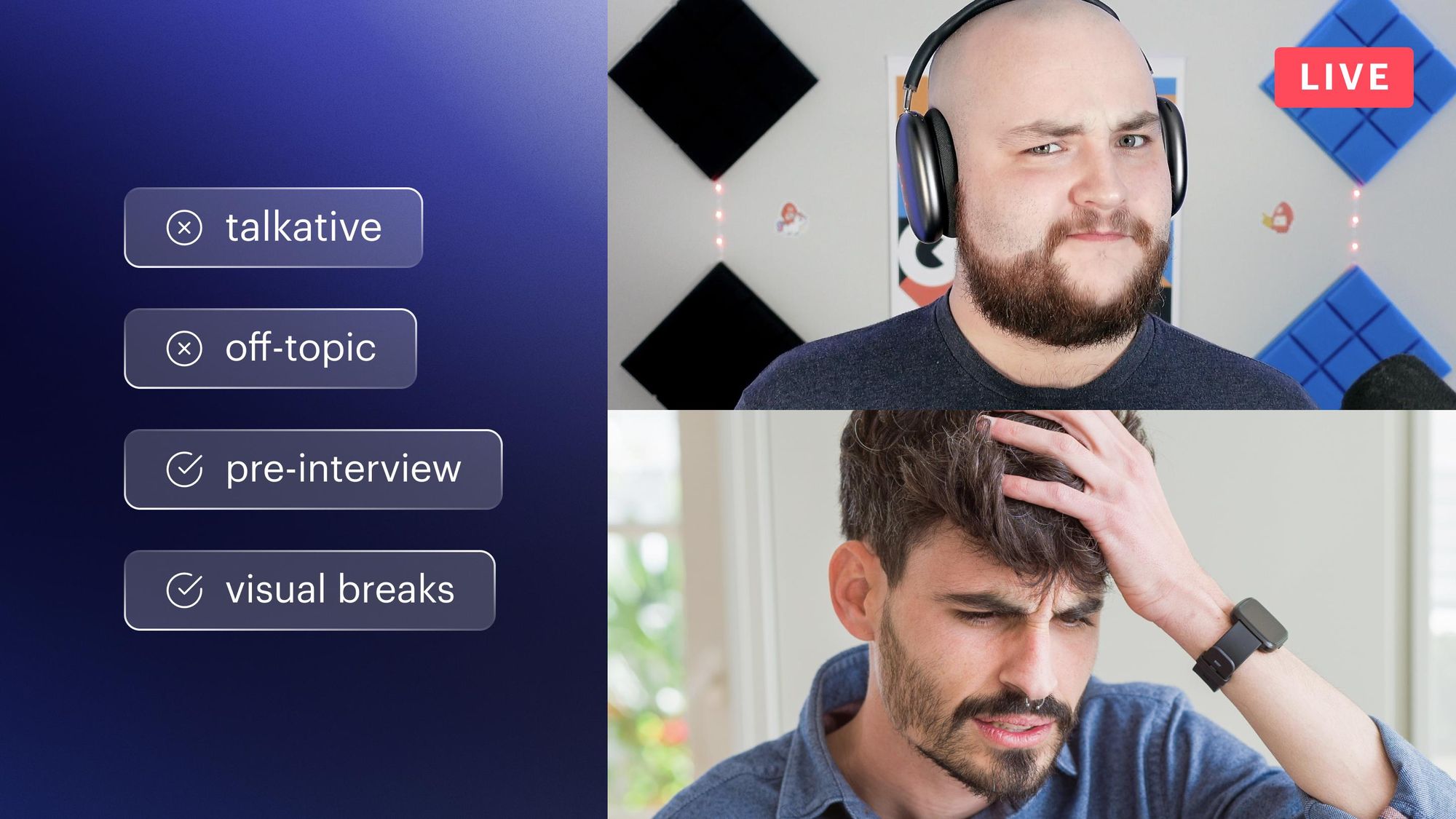Going live on social media sites Facebook, YouTube, Twitter and LinkedIn can boost your engagement — but what if you could stream to your own website, too? Most people avoid streaming to their business or personal websites because they think it’s too difficult to set up. Broadcasting live video directly on your site is actually a breeze if you have the right tools.
These six examples show how to make the most of hosting live video on your website — and highlight that streaming to your own site isn’t limited to one industry. Let’s see how agencies, places of worship, e-commerce shops, and more use embedded live streams on their websites.
Why live stream on your own website?
Providing a more engaging experience for your website visitors is only one reason you should go live on your site. There are other benefits to hosting your own live streams.
Own your content
By broadcasting live video directly to your web page rather than to social media, you have more control over your content. You aren’t subject to the platform’s community guidelines or algorithm, so there’s no risk of your live video being taken down. You’re free to promote your brand however you want, plus you can more easily “gate” your live videos so only subscribers can see them.
You work hard on your video content and invest a lot to make it successful. Why host it on rented property (social media) when you can host it on owned property (your website)?
Bring your audience closer to your CTA
When you host a live stream on Facebook, YouTube or LinkedIn, your goal is usually to get people to your website to buy products, sign up for a newsletter, or discover your other content. If you stream on your website instead of another platform, your potential customers are already on your site and one step closer to becoming a customer.
Provide a consistent destination for your live videos
By embedding your live videos, you make your website a one-stop destination for your audience. They can learn about your brand, browse your products and services, and engage with you in real time via a live broadcast. You don’t have to worry about connecting with customers on a separate platform. Your customers don’t have to worry about scrolling through YouTube or Facebook to find your live video. By streaming consistently on your website, you help build brand awareness and community.
Who can use embedded live videos?
All types of websites can benefit from an embedded live video player. Here are six scenarios to show you the potential of live streaming to your own website.
1. Places of worship
In the last few years, more churches and places of worship have started broadcasting their services and events online. Although many have seen a lot of success with streaming their services, there’s one major sticking point: members who are not tech savvy are less likely to tune in on social platforms.
By embedding a live video player on your place of worship’s website, the members of your congregation can go directly to your site and watch the service or event you’re hosting. They don’t have to sign in to a social media account, and they can see any bulletins or upcoming events without having to leave your website.
Example
Glad Tidings church has an active online presence and regular worship services and ministries. The church streams all its services to its website on a dedicated live streaming landing page. If there aren’t any broadcasts when visitors access the page, they can watch replays of previous services from the archives.
2. E-commerce shops
For businesses that sell their products through their websites, live shopping can help forge stronger connections with customers. You can broadcast a live demo of one of your most popular products, host a Q&A session with viewers, or interview one of your current customers live.
As an e-commerce shop, your customer service is just as valuable as the products you sell. With a live video embedded on your site, you show your audience that you take their concerns seriously and are willing to answer questions promptly.
Example
Artist David Lozeau sells his creations on his Shopify site. Lozeau regularly live streams his creation process as a way to connect with potential customers and network with other artists. When it comes to works of art, people love seeing the “behind-the-scenes” footage of the progress the artist makes. Lozeau streams his artwork on his website, rather than social platforms, so people can watch the art come to life and then decide to purchase it — all on one site.
3. Agencies
Agencies that assist clients with web development, digital marketing, or virtual event planning use embedded live videos on their clients’ websites to drive more traffic and engagement. When you build and design a client’s website, you can add an embedded video player as a value-add to your services.
If you offer remote event management services, your clients will be more impressed if you can create a dedicated event site that hosts the live stream of their event, rather than relying on other platforms. For agencies that offer consulting services, using a live video player on their sites lets them provide live webinars and workshops, which can only be accessed by subscribers
Example
Social selling and business development consulting firm Maverrik creates a lot of educational content for their target audience. While some of their webinars and videos are free to access on social media sites like YouTube, some of their courses require membership. Maverrik hosts these videos on a gated part of their website, making the content more exclusive.
4. Coaches and educators
Although on-demand courses have skyrocketed in popularity in recent years, coaches and educators will tell you there’s no substitute for connecting with students in real time. Live video bridges the gap between teacher and student when in-person learning isn’t possible.
Coaches and educators who want to forge genuine connections with their students can benefit from having live broadcasts on their websites, rather than using an e-learning platform. Students don’t have to make a separate account for one of these platforms and can stay on your website to watch courses live, as well as view replays from previous sessions.
Example
Continuing education and professional development is crucial to the field of physical therapy. The company Physio Matters knows this and hosts a quarterly Therapy Live event for therapists all over the world to network, learn about best practices, and stay updated on developments in the field. These events are hybrid, so attendees can join in-person or online via the Therapy Live website. Conference participants must register beforehand, and that registration allows them to access the gated part of the website where live broadcasts of the events are hosted.
5. Small and medium-sized businesses
As a small or medium-sized business (SMB), fostering connections with your clientele is essential. Whether you aim to provide top-tier customer service or simply take more time to get to know your customers, keeping people engaged helps sales. By interacting with customers live on your website, you bring them closer to your business.
Live content that benefits your SMB could be behind-the-scenes looks at your company, profiles of your employees, Q&As with customers, or even a live giveaway. When you host these types of broadcasts on your own website, rather than on social media, it makes your potential customers more aware of your brand.
Example
A local window tinting company in North Carolina, Xtreme Shades, regularly streams its experts applying window tint to car windows in its workshop. The business embeds the live stream on its home page, so when a live session is taking place, potential customers can tune in to learn more about the services Xtreme Shades offers.
6. Nonprofits
Raising awareness and fundraising are two major activities of nonprofit organizations. Most organizations host in-person and virtual events to accomplish these goals. By streaming an event to the organization’s website or a dedicated event page, rather than to YouTube or Facebook, you reinforce your nonprofit’s mission, branding and goals.
It’s also easier to raise awareness about your organization’s cause and to ask for donations if you’re live on your own site. You can post a donation link on the same page as the live stream so viewers can’t help but see it.
Example
The civil rights nonprofit National Action Network hosted its 2022 convention in person but decided to live stream it on their convention website as well. The event spanned four days, and each day remote attendees could tune in and catch all the action. Now that the event is over, the convention website hosts the replays, so anyone who is interested can rewatch them.
Live stream to your website with Restream
Many people decide to stream on social media because they think the setup is easier. When you use Restream’s live video web player, however, embedding live broadcasts on your site is a breeze. With Restream’s embedded video player, you can stream to your website via an encoder, like Zoom or OBS, or with Restream Studio. You can also schedule an event in advance and live stream the event to your website.
Wrap-up
No matter your industry or brand-building goals, you can benefit from streaming directly to your website. If you already have a live video strategy in place, all it takes is choosing the right web player to broadcast to your site. With Restream’s live video web player, you can focus on creating engaging content and not on the technical issues.







